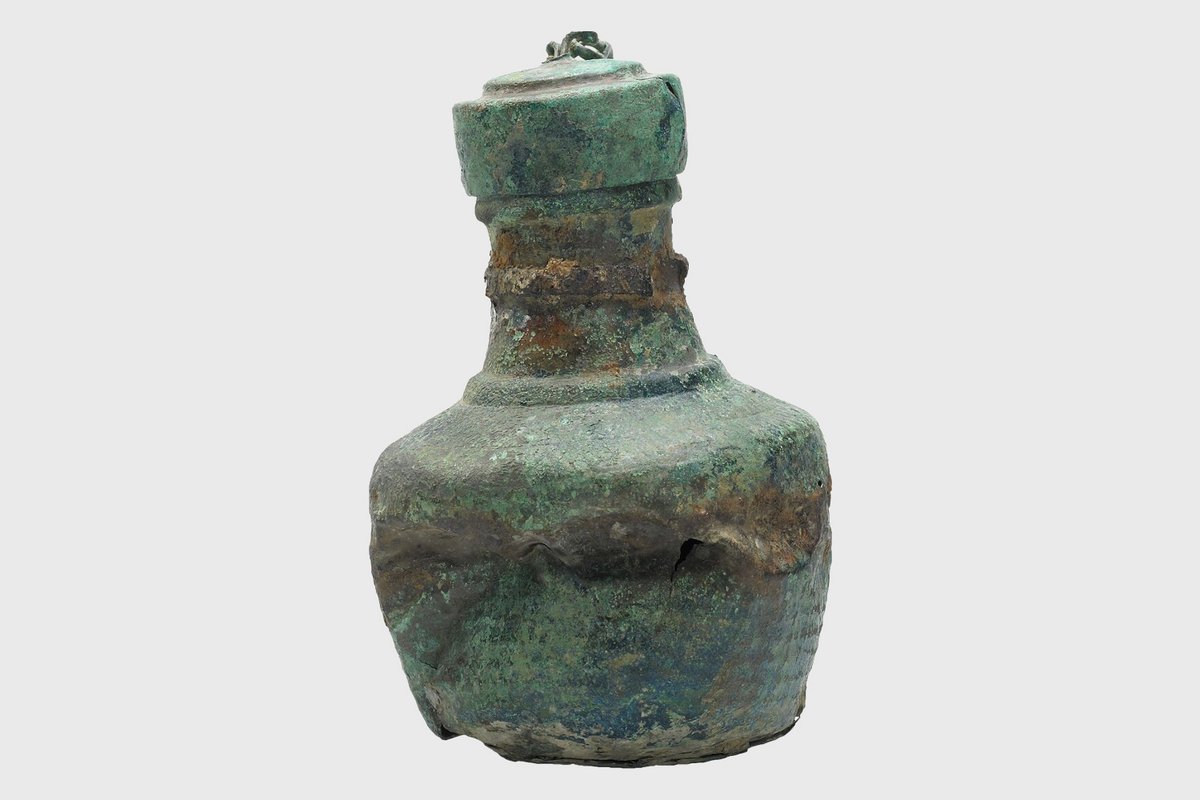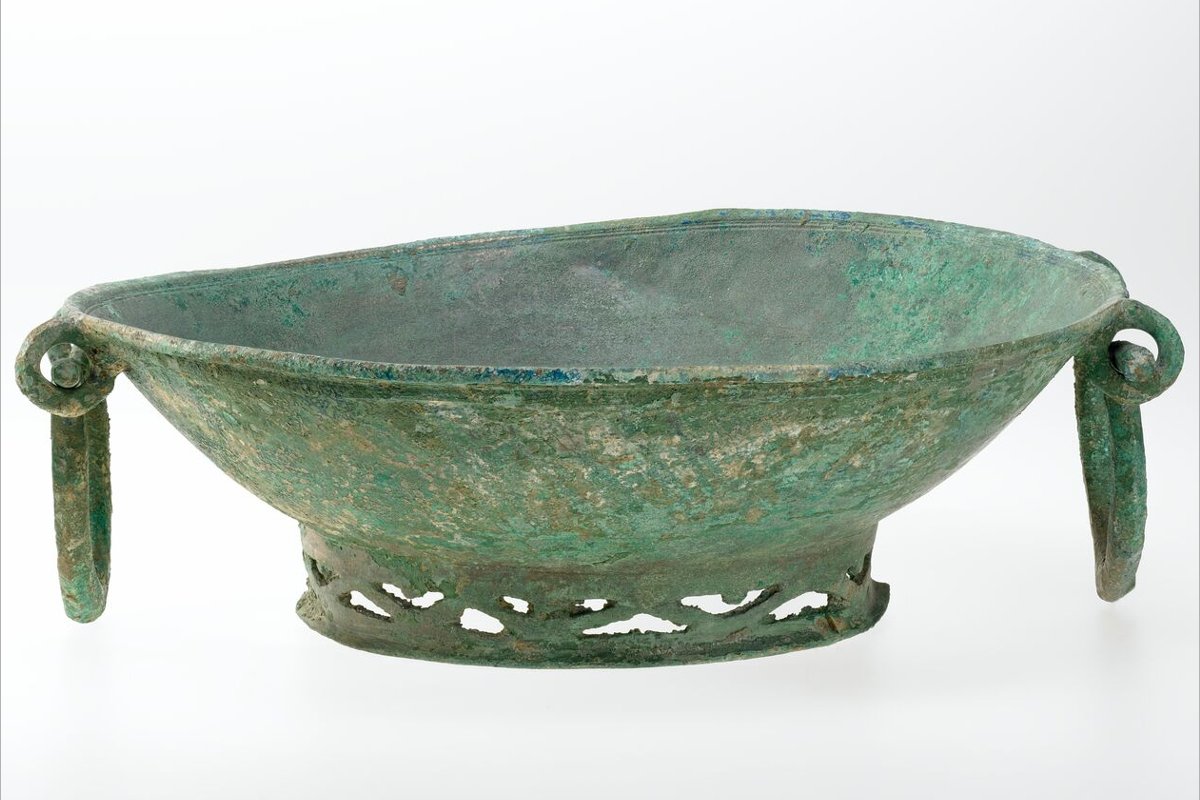The Mediterranean non-ferrous metal vessels from Aidlingen
Several decades ago, during unobserved construction activities, an ensemble of two non-ferrous metal vessels came to light in Aidlingen in the district of Böblingen (Baden-Württenberg), having probably originally been deposited in a Merovingian grave as grave goods. They are a cast basin with two movable handles and a chased copper bottle with a slip lid, which originally had a handle. While the basin belongs to a type common in western Europe and surely manufactured in the eastern Mediterranean, most probably in Egypt, the copper bottle represents a speciality in the Early Medieval West: only in Italy and in the tomb of the “Prince of Prittlewell” (Essex, Great Britain) have similar vessels been found. In view of the numerous parallel finds from the eastern Mediterranean, there is no doubt that they originated there.
The ensemble of vessels offers the opportunity to investigate the manufacturing process of the vessels and to find out to what extent information on the origin of the raw materials is possible. In addition, the question of how the vessels were transported to Western Europe and the underlying mechanisms will be investigated. Especially for the copper bottles, which are rare in the West, functional aspects must be clarified as well as their social significance. The aim of the project is better to understand aspects of the production and above all the distribution of early medieval non-ferrous metal products on the basis of the vessel types found in Aidlingen. In addition to the archaeological examination, classification and preservation of the vessels, a scientific analysis will also be carried out in order to gain information on the production process and possible raw materials.
- Copy link
- Print article
Contact
- Dr. Jörg Drauschke
- +49 6131 8885-163
- Kontakt
Project Period
- Since 01.2012
- Regierungspräsidium Stuttgart, Landesamt für Denkmalpflege Baden-Württemberg, Dienstsitz Esslingen, Referat 84.2

